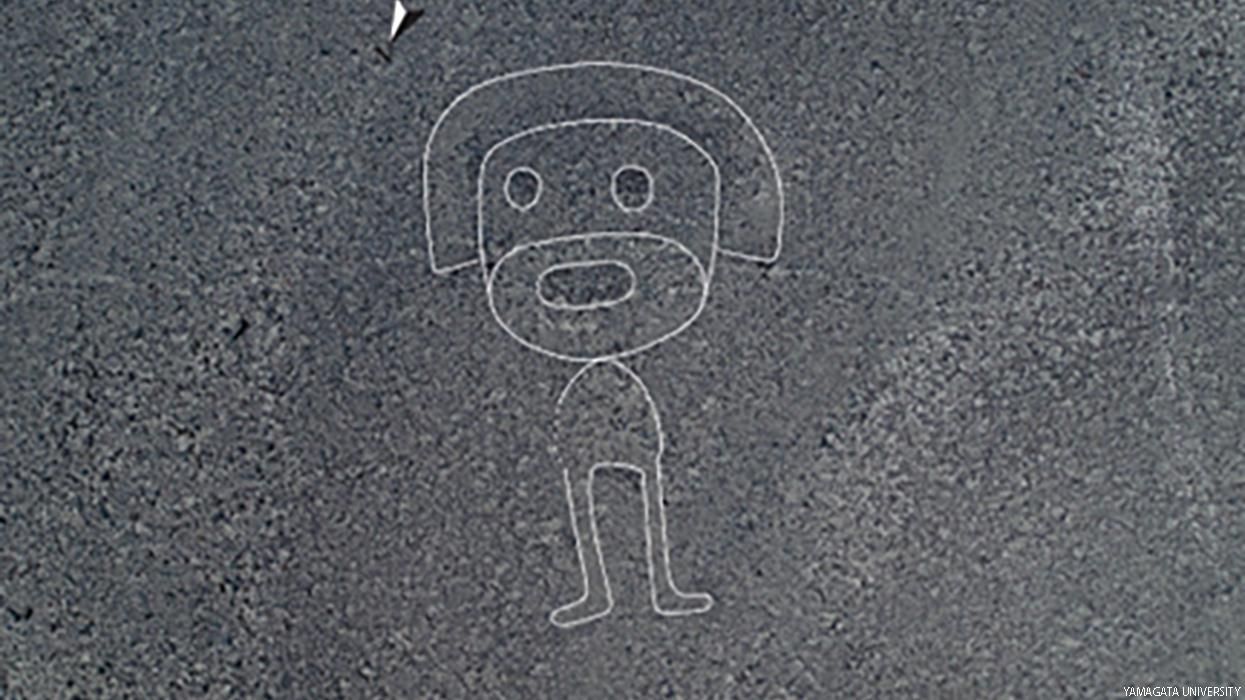News
Discovery of New Geoglyphs Nearly Doubles Peru’s Nazca Lines
Discovery of New Geoglyphs Nearly Doubles Peru’s Nazca Lines

Researchers describe a rich collection of cats, snakes, birds, and even whales.
December 22 2022 8:00 AM EST
By continuing to use our site, you agree to our Privacy Policy and Terms of Use.
Discovery of New Geoglyphs Nearly Doubles Peru’s Nazca Lines

Researchers describe a rich collection of cats, snakes, birds, and even whales.
A team of archaeologists from the Yamagata University Institute of Nasca has announced the discovery of nearly 170 previously unknown geoglyphs in southern Peru. The hundreds of lines and symbols left on the Nasca Pampa and surrounding desert by the region’s previous inhabitants are collectively known as the Nazca Lines.
Led by Professor Masato Sakai of Yamagata University in collaboration with Peruvian archaeologist Jorge Olano, the multi-year effort used drones and aerial photos to locate and document the geoglyphs depicting humans, snakes, cats, killer whales, and other figures.
“Field surveys using high-resolution aerial photos, and drone images (from June 2019 to February 2020) led to the discovery of 168 geoglyphs, including animals and humans, on the Nasca Pampa and near the city of Nasca,” Yamagata University said in a press release announcing the find. “Adding the newly discovered 168 geoglyphs to the 190 geoglyphs discovered until 2018 results in a total of 358 geoglyphs. These geoglyphs were created by removing black stones from the surface of the earth to expose a white sandy surface below.”
RELATED: Machu Picchu: Ancient City in the Clouds
The Nazca Lines geoglyphs were the creation of the pre-Hispanic societies that existed in the region between the 8th century B.C.E. and the 8th century C.E. Researchers believe the newly discovered geoglyphs date between 100 B.C.E. and 300 C.E.
Roughly 250 miles south of Lima, the area is a UNESCO World Heritage Site, and an archeological park was established in 2017 near the city of Nasca to protect a significant concentration of the drawings. Yamagata University said 77 of the newly discovered geoglyphs were found within the archeological park and up to 36 geoglyphs were discovered in the Aja area near Nasca.

UNESCO notes there are two general types of geoglyphs comprising the Nazca Lines: representational, which uses schematic form to depict “a variety of natural forms including animals, birds, insects, and other living creatures and flowers, plants, and trees, deformed or fantastic figures” and other forms; and the far more prevalent geometric lines that are “generally straight” and “crisscross certain parts of the pampas in all directions.” While representational geoglyphs appear less frequently than linear geoglyphs amongst the previously known sites, 163 of the new finds are representational. Researchers say the newly discovered geoglyphs are generally less than 30 feet in diameter.
RELATED: An Out Traveler’s Guide to Peru
The region’s arid conditions and low rate of rainfall (the lowest in the world) have contributed to the survival of the Nazca Lines. There is little flooding and erosion that would come with heavier rainfall, and the area is relatively unpopulated with remarkably little human damage as a result.
UNESCO notes “the geoglyphs and cultural landscape have remained intact for nearly two millennia, from their design in the 8th century BC to nowadays,” and that “most of the lines and figures are in fair condition.”
Managing Editor at OutTraveler. Also write for Out, The Advocate, and Plus magazines.
Managing Editor at OutTraveler. Also write for Out, The Advocate, and Plus magazines.